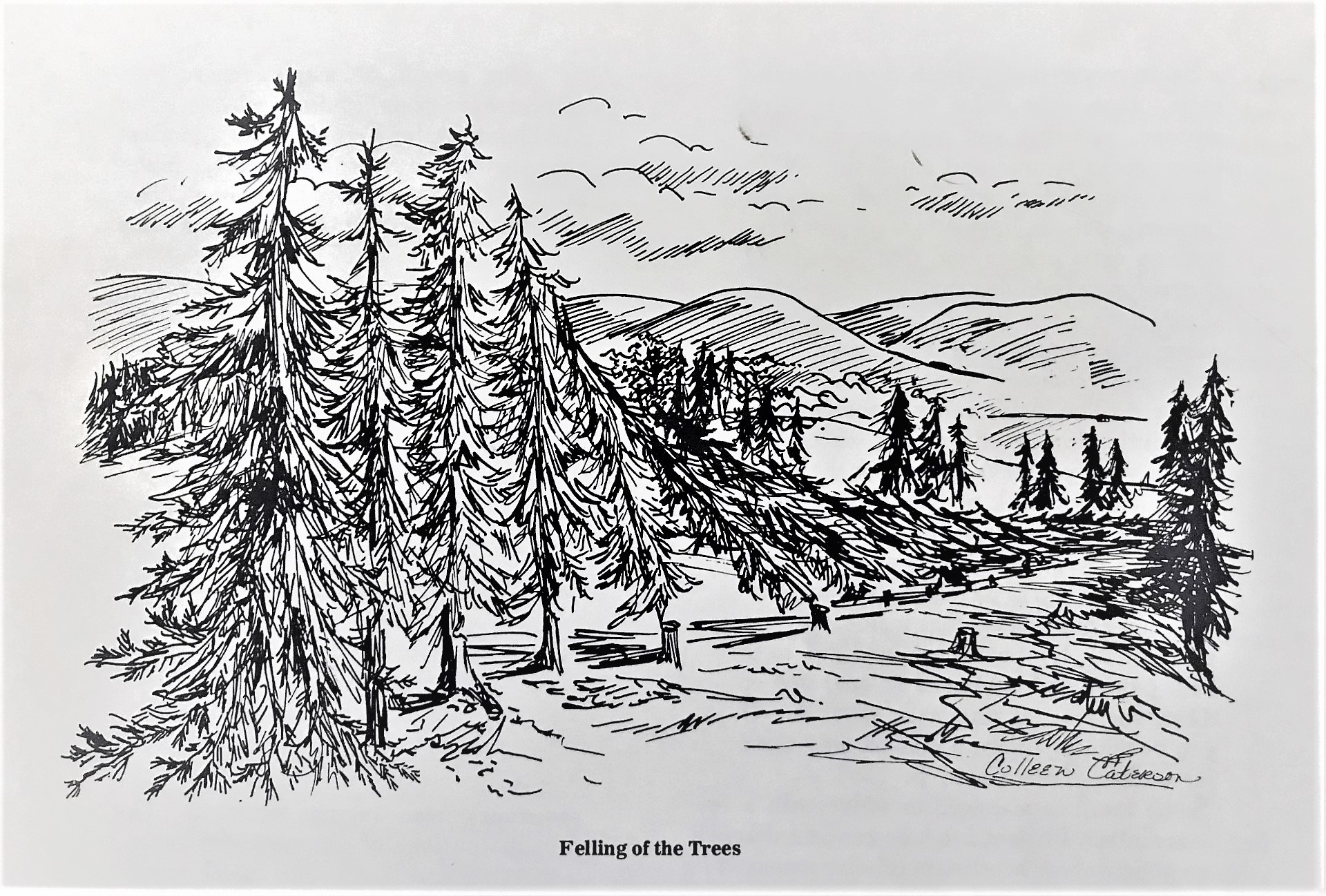Over the past few months, I’ve delved deeper into the history of Montrose, Pennsylvania, than ever before. I’ve always been interested in writing about places, and for a long time, this small town where I live has provided plenty of inspiration. One of my writing projects has been a collection of poems about Montrose that I’ve finally decided to publish, and of course, that’s when doubt really starts to creep into my thoughts. Here I am, writing about my adopted hometown, but what did I really know? I had the overwhelming feeling that I was only skimming along the surface. I’d written about a few notable people and specific places, even a poem about our Fourth of July celebration, but I needed more details, more history. So now, several months later, having scrutinized old maps, read old newspapers, and seen hundreds of old photographs, I’m rediscovering the place I’ve called home for the past fifteen years.
Published in 1873, Emily Blackman’s History of Susquehanna County, Pennsylvania contains a wealth of information, including much about the founding of Montrose. She’s considered to be the area’s first historian, so naturally, I’ve been reading her book, scanning the index and picking relevant topics. One story that stands out, especially at the beginning of this month, recalls the first Fourth of July celebration, only a short year after Captain Bartlet Hinds built a small log cabin that became the town’s first settlement in 1800.
Just like our modern fireworks, these early settlers wanted something grandiose, something with a great boom. If we take Blackman at her words, Captain Hinds must have been a clever woodsman, besides a soldier. Hoping to recreate the fusillade of cannon fire, Hinds felled thirteen trees in quick succession, choosing trees and notching them in such a way to fall like dominoes. Has anyone ever heard of such a feat? The noise must have been marvelous, as each tree crashed into the next and into the next on down the line. As the boom resounded in the woods, and the last tree fell to the ground, I can only imagine the few settlers gathered about clapping and cheering such a spectacular show.

Somewhere off in the woods nearby at least one other person heard the flurry of the captain’s wooden cannons. Reportedly, Jason Torrey, while out surveying land, followed the great boom to its source and soon discovered the little party in the midst of their merry making. They gave him food and drink, and according to Blackman, Captain Hinds offered up a toast on the nation’s birthday, saying, “The United States! May their fertile soil yield olive for peace, laurel for victory, and hemp for treason!”
Although we can’t give credit to Hinds for composing these words, as this was a familiar toast at the time, his fighting spirit is certainly embodied in them. Hinds was a soldier, after all, having fought for liberty or death against the British. In fact, Thomas Jefferson, who wrote The Declaration of Independence, was the newly inaugurated President of the United States in 1801, and George Washington had only died a couple years earlier.
So goes the first of many celebrations in The Hinds Settlement, later renamed Montrose, Pennsylvania. While researching the details of this event, I did come across at least one person who asked, Why thirteen trees? Indeed, I don’t want to take anything for granted, so let us remember the thirteen stripes on our flag represent the original thirteen colonies who banded together to fight for independence. By the day Hinds brought thirteen trees crashing to the ground, the number of states in the union had grown to sixteen, but thirteen had already become sacred. So strange, that today, we associate the number with bad luck and trouble. It seems to me, however, that Captain Hinds most certainly had those original colonies in mind when planning his “fireworks” for the Fourth of July.
It’s interesting to note, too, that one of the mottos of our new nation, e pluribus unum—a Latin phrase meaning “out of many, one”—was even comprised of thirteen letters. As an English teacher and student of language, I’ve always found this detail about the motto fascinating, but the phrase becomes even more poignant as I think about the beginnings of Montrose taking shape. When the Hinds family and Jason Torrey came together, they were parts that joined as one to create something greater, much like our country, much like our small town, much like our annual celebration, and much like those thirteen trees, so many years ago, crashing together into one great echoing sound heard deep in the woods.
All of this makes me reflect on things that bring us closer, that pull us together rather than apart. The Fourth of July in our town, unlike many of our other holidays, is unique in that respect. Whether we gather along the parade route, visit the vendors on The Green, or sit together to watch the fireworks at the end of the day, we celebrate together. My parents, for instance, will travel two hours to be here. Many others are coming from much farther to visit close friends and family, often using this event to return to their roots. It’s estimated that our town swells to nearly 20,000 people on this one day of the year. Although they will not hear the thunderous roar of those thirteen trees described by Emily Blackman in her book, it’s clear that our tradition of bringing people together, especially in Montrose, is still strong.

What a great image you have shared of the trees. After reading your blog about Hinds’ tree felling aloud to my partner, we both began discussing what trees might have been selected… ruling out Pennsylvania’s native hemlocks, I imagine hardwoods, preferring oak trees over maple, to complete the details in my mind – those massive standing still people. They too, having to quietly accept their fate; enlisted into another’s celebration and executed for the momentary pleasure of their new neighbors. I’m sure they were put to other use posthumously.
LikeLike
Alas I was #13 when I played soccer for the Montrose Meteors back in the early 80’s. It was bad luck for the other team.
LikeLike
Hey, thanks for dropping by my blog, and nice story. Out of curiosity, is Montrose named after the Scottish town, or perhaps one of the Dukes of that name?
LikeLike
Robert H. Rose did indeed name Montrose, Pennsylvania, after the town in Scotland. His last name is merely a coincidence, although it might lead people to believe he named it after himself. There’s an interesting story about the naming of the town that I’ve read in the past few months, but I can’t seem to locate it right now. When I find it again, I’ll have to do a little post about it.
LikeLiked by 1 person
Thanks – I’ll tune in for that!
LikeLike
Informative, elegant writing.
LikeLiked by 1 person
Interesting and informative well written article. Thanks for your enlightenment.
LikeLike
Interesting and informative article. Thanks for your enlightenment.
LikeLike